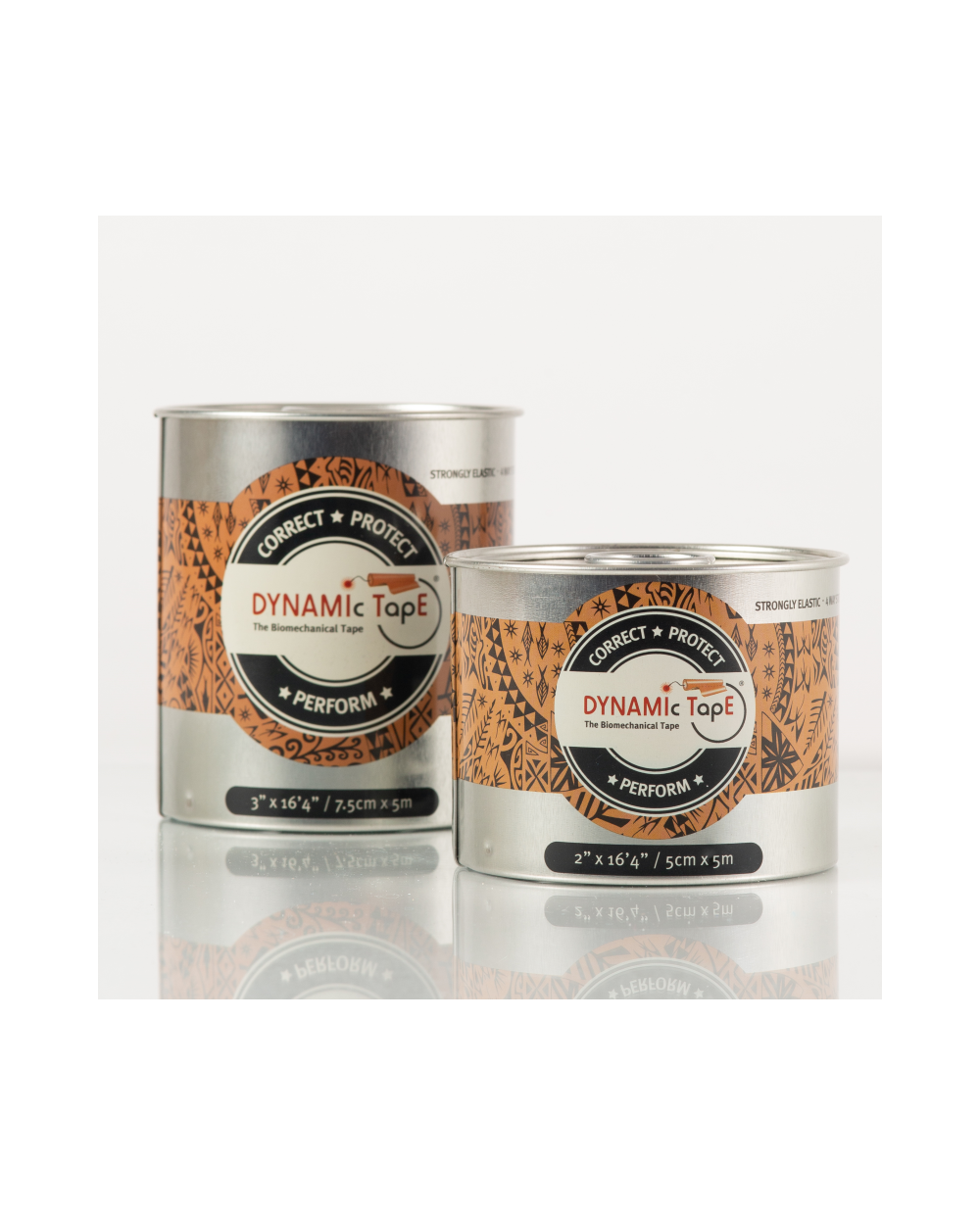We use cookies to make your experience better. To comply with the new e-Privacy directive, we need to ask for your consent to set the cookies. Learn more.
Dynamic Tape
Dynamic Tape is a revolution in taping. How so? Let’s start with a little about the tape itself:
- Dynamic Tape is composed of a synthetic, stretch nylon & lycra cloth compared to that of Kinesiology tapes that are predominantly cotton
- Dynamic Tape is designed to stretch in all direction (4-way stretch) while Kinesiology tapes are designed to stretch longitudinally (2-way stretch)
- Dynamic Tape has many times the resistance and recoil, likened to a bungee cord. Kinesiology tapes have a very gentle recoil, designed to lift the skin.
- Dynamic Tape can stretch to over 200% of its resting length with no restrictive end point. Kinesiology tapes typically stretch 140% – 180% with a defined rigid end point where the tape will stretch no more. This prevents the tape from being applied with the body part in a shortened position while maintaining full range.
- Dynamic Tape is designed to work mechanically, designed to alter movement patterns while absorbing load and re-injecting that energy back into movement, all without limiting range of motion. Kinesiology tapes are designed to work neurophysiologically, meaning they interface with the skin to alter pain perception, address lymphatic drainage, and encourage changes in neuromuscular function.
WHY IS IT CALLED ‘BIOMECHANICAL TAPE’?
Dynamic Taping is about managing load, managing movement patterns, and managing function by introducing force into the system and based on sound clinical reasoning. Biomechanics is defined as “the study of the mechanical laws relating to the movement or structure of living organisms.” Dynamic Tape is an externally applied load absorbing product that affects the work of muscles and motion of joints. As mentioned, kinesiology tapes are designed to lift the skin to create space in order to take pressure off pain sensitive structures, increase circulation, or to affect muscle activity via the input into the nervous system through the skin. Dynamic Tape doesn’t fit that category but it does fit with the concepts of Biomechanics. In fact, Dynamic Taping has more in common with traditional, rigid athletic tapes, Mulligan and McConnell taping than it does with kinesiology taping.
HOW DOES DYNAMIC TAPING WORK?
MECHANICAL MECHANISMS
A focus on movement, function, and load allows us to get effective results. Dynamic Tape has been specifically developed to provide strong mechanical assistance externally to:
- Reduce the work on injured tissues
- Assist weak muscles
- Improve movement patterns
- Augment stability via force closure mechanism
- Change position to improve the muscle’s capacity to generate force (length-tension relationship or modifying lever arms)
All while still allowing full range of motion even when performing complex, multi-planar movements like those required in sport or work.
Of course, you will see many taping applications on athletes that have no possibility of having a mechanical effect. Certain criteria must be fulfilled and obtaining a mechanical effect on some parts of the body is much harder than others. Correct application is essential.



